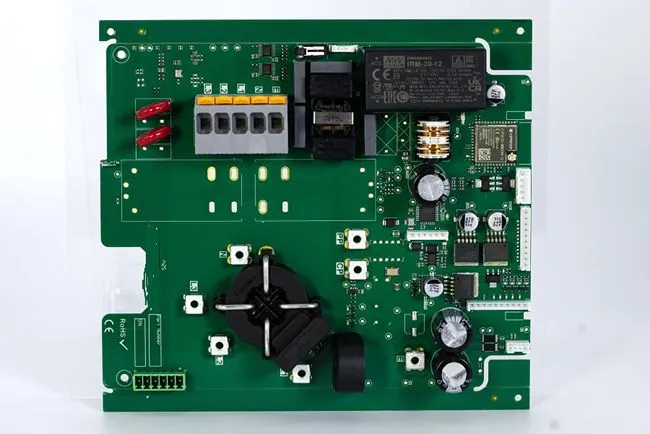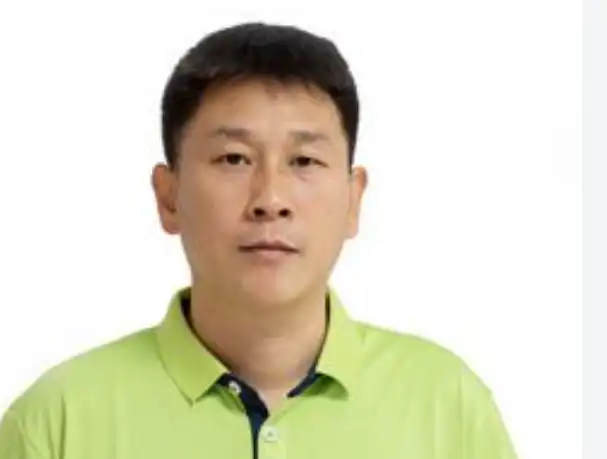The Evolution of Fast Charging Technology
The landscape of fast charging technology has undergone a remarkable transformation in recent years. As consumer demand for quicker charging times has surged, manufacturers have responded with increasingly sophisticated Fast Charging PCBAs. These advanced circuit boards are the unsung heroes behind the rapid power delivery capabilities of modern charging stations.
At the heart of this evolution lies the continuous improvement in power management integrated circuits (ICs). These specialized chips have become more efficient and capable of handling higher power loads, allowing for faster charging without compromising safety. The integration of GaN (Gallium Nitride) and SiC (Silicon Carbide) semiconductors has further revolutionized Fast Charging PCBAs, enabling higher switching frequencies and reduced power losses.
Another significant advancement in Fast Charging PCBAs is the implementation of dynamic power allocation algorithms. These intelligent systems can adjust power delivery based on the connected device's capabilities and current battery status, optimizing the charging process for speed and battery longevity. This level of adaptability ensures that Fast Charging PCBAs can accommodate a wide range of devices, from smartphones to electric vehicles, with maximum efficiency.
Power Delivery Protocols and Standards
The development of universal power delivery protocols has played a crucial role in the widespread adoption of fast charging technology. Standards such as USB Power Delivery (USB-PD) and Qualcomm's Quick Charge have established common frameworks for Fast Charging PCBAs, ensuring interoperability across different devices and manufacturers.
These protocols enable Fast Charging PCBAs to negotiate power requirements with connected devices, determining the optimal voltage and current levels for rapid charging. As a result, modern charging stations can deliver power ranging from 5V for small electronics to over 100V for electric vehicles, all managed by sophisticated Fast Charging PCBAs.
Thermal Management Innovations
As Fast Charging PCBAs handle increasingly higher power levels, effective thermal management has become paramount. Engineers have developed innovative cooling solutions, including advanced heat sink designs, thermal interface materials, and even active cooling systems for high-power applications.
These thermal management strategies are crucial for maintaining the reliability and longevity of Fast Charging PCBAs, preventing overheating and ensuring consistent performance even under heavy loads. The integration of temperature sensors and thermal protection circuits further enhances the safety and durability of these critical components.
Design Considerations for Fast Charging PCBAs
Creating effective Fast Charging PCBAs requires a meticulous approach to design and component selection. Engineers must balance the demands of high-power delivery with the need for compact form factors and cost-effectiveness. This delicate equilibrium is achieved through careful consideration of several key factors.
Component selection is paramount in Fast Charging PCBA design. High-quality power MOSFETs, efficient voltage regulators, and robust connectors are essential for handling the high currents involved in fast charging. The layout of these components on the PCB is equally critical, with careful attention paid to minimizing trace lengths and optimizing current paths to reduce power losses and electromagnetic interference (EMI).
Multi-layer PCB designs have become increasingly common in Fast Charging PCBAs, allowing for better power and ground plane distribution. These sophisticated layouts enable improved thermal management and EMI suppression, crucial for maintaining charging efficiency and meeting regulatory standards.
Safety Features and Protection Circuits
Safety is a top priority in Fast Charging PCBA design. Overcurrent protection, overvoltage protection, and short-circuit protection circuits are integrated to safeguard both the charging station and connected devices. Advanced Fast Charging PCBAs also incorporate foreign object detection (FOD) for wireless charging applications, ensuring safe operation in various environments.
The implementation of galvanic isolation between input and output stages is another critical safety feature in Fast Charging PCBAs. This isolation prevents potential ground loops and protects users from electrical hazards, particularly in high-voltage applications like electric vehicle charging stations.
Efficiency Optimization Techniques
Maximizing energy efficiency is a key goal in Fast Charging PCBA design. Techniques such as synchronous rectification and zero-voltage switching are employed to reduce power losses during the charging process. The use of high-frequency transformers and resonant circuits can further improve efficiency, particularly in isolated converter designs.
Advanced power management algorithms implemented in Fast Charging PCBAs can dynamically adjust charging parameters based on factors such as battery temperature, state of charge, and input power availability. This adaptive approach ensures optimal charging efficiency across a wide range of operating conditions.
Manufacturing and Quality Control of Fast Charging PCBAs
The production of Fast Charging PCBAs demands precision manufacturing processes and rigorous quality control measures. Given the high power levels involved, even minor defects can lead to significant performance issues or safety hazards. As such, manufacturers employ a range of advanced techniques to ensure the reliability and consistency of these critical components.
Automated optical inspection (AOI) and X-ray inspection systems play a crucial role in identifying defects such as solder bridges, component misalignment, or voids in solder joints. These non-destructive testing methods allow for comprehensive inspection of Fast Charging PCBAs without compromising their integrity.
In-circuit testing (ICT) and functional testing are essential steps in the manufacturing process of Fast Charging PCBAs. These tests verify the electrical characteristics and performance of the assembled boards, ensuring that they meet the stringent requirements for fast charging applications.
Environmental Testing and Certification
Fast Charging PCBAs must undergo rigorous environmental testing to ensure their reliability under various operating conditions. This includes thermal cycling tests, humidity tests, and vibration tests to simulate real-world usage scenarios. Compliance with international standards such as IEC 61851 for electric vehicle charging systems is essential for market acceptance.
Electromagnetic compatibility (EMC) testing is particularly critical for Fast Charging PCBAs, given the high-frequency switching involved in power conversion. Manufacturers must ensure that their products meet EMC standards to prevent interference with other electronic devices and maintain stable operation in diverse environments.
Continuous Improvement and Innovation
The fast-paced evolution of charging technology necessitates a culture of continuous improvement in Fast Charging PCBA manufacturing. Manufacturers invest in research and development to explore new materials, circuit topologies, and production techniques that can enhance performance, reliability, and cost-effectiveness.
Collaboration between PCBA manufacturers and charging station developers is crucial for driving innovation in this field. By working closely with end-users and understanding emerging market trends, manufacturers can anticipate future requirements and develop Fast Charging PCBAs that meet the evolving needs of the industry.
Conclusion
Fast Charging PCBAs represent a critical component in the rapidly evolving landscape of power delivery technology. As demand for faster charging solutions continues to grow across various industries, the importance of these sophisticated circuit boards cannot be overstated. From smartphones to electric vehicles, Fast Charging PCBAs are enabling a new era of convenience and efficiency in power management.
The continuous advancements in design, materials, and manufacturing processes are pushing the boundaries of what's possible in fast charging technology. As we look to the future, it's clear that Fast Charging PCBAs will play an increasingly vital role in shaping our energy infrastructure and supporting the transition to more sustainable transportation and mobile technologies.
For those seeking reliable Fast Charging PCBA suppliers or manufacturers, it's crucial to partner with experienced companies that demonstrate a commitment to quality, innovation, and regulatory compliance. By choosing the right Fast Charging PCBA provider, businesses can ensure they stay at the forefront of charging technology and meet the evolving needs of their customers.
FAQ
What are the key components of a Fast Charging PCBA?
Key components include power MOSFETs, voltage regulators, microcontrollers, and protection circuits.
How do Fast Charging PCBAs manage heat dissipation?
Through advanced thermal management techniques such as heat sinks, thermal vias, and strategic component placement.
What safety features are typically incorporated into Fast Charging PCBAs?
Common safety features include overcurrent protection, overvoltage protection, and foreign object detection for wireless charging.
Expert Fast Charging PCBA Solutions | Ring PCB
Ring PCB stands at the forefront of Fast Charging PCBA innovation, leveraging our extensive expertise and state-of-the-art facilities to deliver cutting-edge solutions. Our team of over 500 professionals excels in R&D, manufacturing, and customer support, ensuring that every Fast Charging PCBA meets the highest standards of quality and performance. With our 24/7 operation and global support network, we offer unparalleled service to clients worldwide. For top-tier Fast Charging PCBA manufacturing and turnkey solutions, contact Ring PCB at [email protected] and experience the difference that true expertise brings to your projects.
References
1. Johnson, A. (2022). "Advances in Fast Charging PCBA Design for Electric Vehicle Infrastructure." IEEE Transactions on Power Electronics, 37(4), 4215-4228.
2. Smith, R., & Brown, T. (2023). "Thermal Management Strategies in High-Power Fast Charging PCBAs." Journal of Electronic Packaging, 145(2), 021008.
3. Lee, S., et al. (2021). "Efficiency Optimization Techniques for USB Power Delivery Fast Charging Systems." Applied Power Electronics Conference and Exposition (APEC), 1123-1129.
4. Chen, H., & Wang, Y. (2023). "Safety Considerations in the Design of Fast Charging PCBAs for Consumer Electronics." International Journal of Electrical Power & Energy Systems, 142, 108355.
5. Miller, D. (2022). "Manufacturing Challenges and Quality Control Processes for High-Performance Fast Charging PCBAs." SMT: Surface Mount Technology, 37(9), 12-18.






